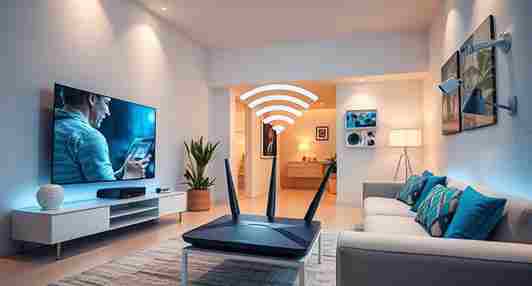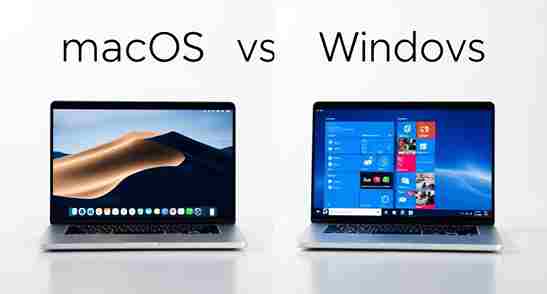Wi-Fi 7 Explained: Speed Up Your Smart Home Now
Wi-Fi 7 Explained is the next leap in wireless speed, reliability, and smart connectivity. Officially known as 802.11be, it’s built to handle the demands of increasingly connected homes in 2025. If your smart home includes streaming devices, AI assistants, security cameras, and work-from-home tech, Wi-Fi 7 could change how all of it functions.
This new generation brings major improvements: faster speeds, lower latency, and stronger performance in crowded environments. It also unlocks features like Multi-Link Operation and wider 320 MHz channels—delivering seamless access across dozens of devices.
Why does this matter now? As more households rely on connected tech, older Wi-Fi standards can’t keep up. Lag, buffering, and dropped signals are signs your current network is showing its age.
In this post, we’ll break down how Wi-Fi 7 works, what makes it different from Wi-Fi 6 and 6E, and what real-life benefits it offers smart home users. You’ll also learn whether it’s worth upgrading now—and how to make your network future-ready without wasting money.
Let’s explore how Wi-Fi 7 could power the future of your connected life.
What Is Wi-Fi 7?
Wi-Fi 7 Explained: Also known as 802.11be, Wi-Fi 7 is the latest wireless standard defined by the IEEE. It represents a major leap forward in home networking technology. Building upon the strong foundation of Wi-Fi 6 and Wi-Fi 6E, this new standard is designed to deliver ultra-high throughput, drastically lower latency, and smarter bandwidth allocation.
Unlike its predecessors, Wi-Fi 7 isn’t just an incremental speed bump—it introduces entirely new technologies that transform how devices communicate across the 2.4 GHz, 5 GHz, and 6 GHz bands. It enables more efficient multi-device support, real-time responsiveness, and network stability that is essential in today’s increasingly complex smart homes.
Whether you’re streaming 8K content, operating dozens of connected devices, or diving into AR/VR experiences, Wi-Fi 7 makes these possible with greater ease. It’s not just faster—it’s fundamentally more capable, smarter, and future-ready.
From Wi-Fi 5 to Wi-Fi 7: The Evolution
- Wi-Fi 5 (802.11ac) brought us faster speeds on the 5 GHz band.
- Wi-Fi 6 (802.11ax) introduced better performance in crowded areas.
- Wi-Fi 6E extended that power into the 6 GHz band for more bandwidth.
- Wi-Fi 7 (802.11be) now goes even further—with new capabilities designed to support ultra-fast, low-latency applications like AR, VR, 8K streaming, and multi-device smart homes.
Key Technical Improvements (Simplified)
Wi-Fi 7 introduces several powerful upgrades:
- 320 MHz Channels – Double the width of Wi-Fi 6E channels, enabling more data to move at once.
- 4K QAM (Quadrature Amplitude Modulation) – Increases data density, boosting speeds up to 46 Gbps (in theory).
- Multi-Link Operation (MLO) – Combines multiple frequency bands (2.4, 5, 6 GHz) for a single, faster connection.
- Lower Latency – Better for gaming, video calls, and smart device responsiveness.
- Improved Congestion Handling – More reliable in busy homes or apartment buildings.
How Is Wi-Fi 7 Different?
Wi-Fi 7 isn’t just faster—it’s smarter. It uses advanced multi-link operation (MLO) to switch between bands in real-time, improving stability and speed. This means your network automatically finds the best path for every device—no manual tweaking needed.
With improved scheduling and channel coordination, Wi-Fi 7 handles multiple high-bandwidth tasks at once. You can stream 8K video in one room, manage smart home security in another, and take a crystal-clear Zoom call—all without lag or buffering. For connected homes, this is a game-changer.
Comparison: Wi-Fi 7 vs. Wi-Fi 6 vs. Wi-Fi 5
| Feature | Wi-Fi 5 (802.11ac) | Wi-Fi 6/6E (802.11ax) | Wi-Fi 7 (802.11be) |
|---|---|---|---|
| Release Year | 2014 | 2019 (6) / 2021 (6E) | 2024–2025 |
| Top Speed (Theoretical) | 3.5 Gbps | 9.6 Gbps | > 46 Gbps |
| Frequency Bands | 5 GHz | 2.4 GHz / 5 GHz / 6 GHz (6E) | All 3 bands simultaneously |
| Latency | ~30–50 ms | ~20 ms | < 5 ms |
| Multi-Device Handling | Limited MU-MIMO | MU-MIMO + OFDMA | Advanced MU-MIMO + MLO |
| Channel Width | 80/160 MHz | 160 MHz | Up to 320 MHz |
| Bandwidth Aggregation | No | No | Yes (Multi-Link Operation) |
| Smart Home Suitability | Basic streaming + use | Moderate device load | Heavy-load, 8K streaming, IoT |
| Backward Compatibility | Yes | Yes | Yes |
Why Wi-Fi 7 Is a Game-Changer for Smart Homes
Wi-Fi 7 Explained: it’s not just about speed—it redefines what a smart home can do. With more devices and bandwidth-hungry apps in play, older Wi-Fi simply can’t keep up.
1. Blazing Fast Data for All Devices
Wi-Fi 7 delivers peak theoretical speeds exceeding 40 Gbps. That means lightning-fast downloads, zero-buffer streaming, and instant cloud backups. Your smart TV, thermostat, and video doorbell all get what they need—without waiting in line.
2. Smooth Streaming, Lag-Free Gaming, and Crystal-Clear Calls
Forget glitches during Zoom meetings or lag during game night. Wi-Fi 7 uses wider 320 MHz channels and 4K QAM modulation. These tech upgrades translate into richer data flow and consistent, stable performance—even in data-heavy households.
3. Say Goodbye to Congestion and Interference
Traditional Wi-Fi suffers when everyone’s online. Wi-Fi 7 tackles this with multi-link operation (MLO), allowing your devices to use multiple bands at once. It switches seamlessly between 2.4, 5, and 6 GHz to avoid crowding and maintain top speed.
4. Effortless IoT Management
Smart homes are getting smarter—and denser. Wi-Fi 7’s enhanced MU-MIMO and OFDMA technology handle dozens of simultaneous connections. So your smart locks, lights, appliances, and security cams can operate in harmony without packet delays or drops.
In short, Wi-Fi 7 gives your home network the intelligence and bandwidth it needs in 2025. No more dead zones. No more buffering. Just seamless, invisible performance.
Is Your Current Setup Holding You Back?
Before you jump to Wi-Fi 7 , ask this—is your current Wi-Fi setup falling behind? Most users don’t realize how outdated their network has become until problems show up daily.
1. Common Signs Your Network Is Struggling
Are your video calls freezing or dropping? Does your 4K TV take forever to load Netflix? Smart lights not responding instantly? These are red flags. When your devices compete for limited bandwidth, performance suffers. If you notice lag while switching between apps or gaming, your current router might be the bottleneck.
2. Real-World Frustrations We All Know
Imagine this: your smart speaker takes a full minute to respond while your kids are streaming cartoons in another room. You start a Zoom call and suddenly your voice cuts out. These are real consequences of a network that can’t handle today’s demands.
3. Compatibility Can Be the Culprit
Most people don’t know their router has a lifespan. If you’re still using Wi-Fi 5 (or older), you’re missing features like wider bandwidth, better device handling, and frequency agility. Even if your internet speed plan is great, your hardware could be slowing everything down.
4. Smart Homes Need Smart Networks
Modern routers are built to talk to multiple devices at once. Older ones? Not so much. If your smart home feels sluggish, chances are your Wi-Fi tech is out of sync with your lifestyle.
Wi-Fi 7 Explained: Should You Upgrade Yet?
Not everyone needs to upgrade today—but some users definitely should. Let’s break it down.
1. Who Should Upgrade Now
If you run a smart home packed with devices—cameras, smart TVs, thermostats, and voice assistants—you’ll benefit immediately. Wi-Fi 7 handles multiple high-demand devices without slowing down. It’s ideal for gamers, remote workers, or 8K streamers who need ultra-low latency.
Enterprise users and prosumers can also take advantage of the added bandwidth, efficiency, and multi-link operation (MLO).
2. Who Can Wait
If you’re on Wi-Fi 6 or 6E and your current setup meets your needs, there’s no urgent reason to upgrade. Basic browsing, occasional streaming, and low smart home use may not push your system hard enough to see a big difference. Also, older devices won’t benefit unless they support Wi-Fi 7 features.
3. Cost Considerations
Wi-Fi 7 routers are still premium-priced in 2025. Expect to pay $300–$700 depending on features and brand. Add compatible devices—phones, laptops, and mesh systems—and your total investment rises. For many, it makes sense to wait until prices drop and more devices support the standard.
4. Availability and Compatibility
Top brands have started releasing Wi-Fi 7 routers, but compatible phones, smart TVs, and PCs are still catching up. Luckily, Wi-Fi 7 is backward compatible with older standards. That means your current devices will still work on a Wi-Fi 7 router, just without the advanced features.
How to Future-Proof Your Smart Home Setup
Smart homes keep evolving—your network needs to keep up. Wi-Fi 7 offers the foundation, but planning matters.
1. Choose the Right Wi-Fi 7 Router
Not all routers are equal. Look for:
- Tri-band or quad-band capability (2.4 GHz, 5 GHz, 6 GHz, sometimes dual 5 GHz)
- Multi-Link Operation (MLO) support
- High device capacity (200+ connections if you have lots of IoT)
- WPA3 security for encryption
- Reliable firmware support from the manufacturer
Consider mesh systems if you have large or multi-story homes.
2. Smart Network Placement
Router placement impacts performance:
- Centralize the main unit (avoid corners and closets)
- Elevate the router (shelves are better than floor)
- Keep away from metal objects and microwaves
- Use mesh satellites to cover dead zones
Use the 6 GHz band for low-latency tasks like gaming or security streaming.
3. Security and Firmware Best Practices
A smart home needs smart protection:
- Change default passwords
- Enable guest networks for visitors
- Keep firmware up to date
- Use strong admin credentials
- Consider network monitoring apps or firewalls
🛠️ DIY Tip Box
Upgrade Checklist: 5 Things to Know Before You Buy a Wi-Fi 7 Router
- Confirm your devices support Wi-Fi 7 features
- Choose mesh or standard router based on home size
- Verify WPA3 and MLO support
- Check the router’s device handling capacity
- Research firmware update policies from the brand
Common Myths About Wi-Fi 7, Debunked
Wi-Fi 7 Explained in blogs and forums often leads to confusion. Let’s clear up the biggest myths so you make smart choices for your home.
“It’s Only for Gamers”
Wi-Fi 7 isn’t just about low latency for gaming. Yes, it reduces ping and lag—but it also:
Improves Video Call Stability
Wi-Fi 7 improves video call quality by reducing latency and optimizing data flow in real time. This makes your Zoom, Teams, or FaceTime meetings significantly more stable—even when multiple devices are active on your network. You’ll experience fewer audio glitches, frozen screens, or dropped connections. For remote workers, students, or anyone relying on virtual meetings, this makes daily communication smoother and more professional.
Handles 4K/8K Streaming Better
With support for ultra-wide 320 MHz channels and 4K QAM (Quadrature Amplitude Modulation), Wi-Fi 7 delivers faster and more efficient data transfer. That means you can stream high-resolution 4K or even 8K content on multiple devices without buffering. Whether you’re watching a documentary in the living room or gaming in 4K in your bedroom, Wi-Fi 7 ensures cinematic clarity and uninterrupted playback—no more pixelation or delays.
Connects IoT Devices More Efficiently
The average smart home in 2025 can have dozens of connected devices, from thermostats and locks to cameras and voice assistants. Wi-Fi 7 is designed to manage this complexity with improved multi-link operation and dynamic frequency switching. It connects more devices simultaneously without slowing down performance. Your smart lights, security system, and other IoT gear stay responsive, even when the network is busy.
Supports Telehealth, Remote Work, and Smart Appliances
Wi-Fi 7 isn’t just about entertainment—it supports critical functions like telehealth, remote work, and the growing ecosystem of smart appliances. HD medical consultations require stable video and secure data. Home offices need lag-free connections for cloud apps and VPNs. Smart ovens, fridges, and vacuum bots rely on consistent network access. Wi-Fi 7 ensures these services run reliably and securely, helping your smart home evolve with your lifestyle.
If your home has multiple users and smart gadgets, Wi-Fi 7 helps everyone.
“My ISP Speed Is More Important”
Internet speed matters, but so does what happens inside your home network. Here’s why:
Your ISP brings internet to your home, but your router decides how well that connection performs across your devices. With Wi-Fi 7, routers get a major upgrade. Thanks to technologies like Multi-Link Operation and wider 320 MHz channels, data moves faster and more efficiently. Even if you have high-speed internet from your provider, an outdated router can become a bottleneck—slowing down your smart home, causing lag, and limiting performance. Upgrading to Wi-Fi 7 ensures your devices get the full benefit of the speed you’re paying for.
“All Wi-Fi 7 Routers Are the Same”
They’re not. Key differences include:
Bands Supported:
Not all Wi-Fi 7 routers support the full spectrum. While tri-band routers typically include 2.4 GHz, 5 GHz, and the newer 6 GHz band, some budget models may skip the 6 GHz band entirely. That limits the router’s ability to reduce congestion and provide ultra-fast lanes for newer devices.
Processor Speed and RAM:
Wi-Fi 7 routers handle more tasks simultaneously, from managing dozens of devices to running advanced security protocols. A faster processor and higher RAM ensure smooth performance under heavy loads, especially in smart homes with many IoT devices.
Antenna Design and Range:
The number and configuration of antennas affect how far and evenly your signal travels. Improved antenna design in Wi-Fi 7 routers boosts both range and signal strength, reducing dead zones in large or multi-story homes.
Mesh Capability:
For broader coverage, many Wi-Fi 7 systems support mesh networking, where multiple units work together. This eliminates weak spots and maintains high speeds as you move between rooms—a huge benefit for connected homes.
Software and Firmware Update Support:
Smart homes evolve, and so should your router. Look for models with regular firmware updates and long-term software support. These updates not only improve performance but also patch security vulnerabilities, keeping your network protected.
Invest in the right features—don’t just pick the cheapest one with a Wi-Fi 7 sticker.
FAQ
What’s the range of a Wi-Fi 7 router?
Most models offer coverage similar to high-end previous-gen routers—typically up to 2,500 square feet per unit. Mesh systems can extend this further. Placement and wall material still affect performance.
Will my old devices still work?
Yes. These routers are fully backward compatible. Devices using older standards (Wi-Fi 5 or 6) will still connect, though they won’t benefit from the newest speed or efficiency features.
Do I need fiber internet to benefit?
Not necessarily. While fiber can unlock full potential, users with cable or high-speed DSL will still notice improvements in latency, congestion handling, and multi-device performance.
What makes it better for smart security cameras?
Improved stability, lower latency, and less interference mean your video feeds are smoother and more reliable—even when multiple cameras stream simultaneously.
Can I upgrade just my router and skip replacing devices?
Yes. Upgrading the router alone can still improve your network’s efficiency, coverage, and handling of multiple connections. However, only newer devices will access full-speed and advanced features.
Is Wi-Fi 7 overkill for small homes or apartments?
Not necessarily. Even in compact spaces, you’ll benefit from reduced congestion, faster handoffs between devices, and better performance for smart home setups with many connected gadgets.
Final Thoughts: Why Wi-Fi 7 Deserves Your Attention
Wi-Fi 7 Explained clearly shows how this next-gen standard changes smart home connectivity. It’s not just about faster downloads—it’s about smoother experiences, lower latency, and smarter use of bandwidth. Whether you’re streaming 8K, managing dozens of IoT devices, or running your home office, Wi-Fi 7 delivers stability that older standards can’t match.
That said, not everyone needs to rush out and upgrade. If your current setup struggles with buffering, dropped connections, or slow automation responses, a Wi-Fi 7 router could be a worthwhile investment—especially if you plan to expand your smart home over the next few years.
Have you upgraded to Wi-Fi 7 yet? Or are you waiting it out?
👉 Share your thoughts, setup challenges, or success stories in the comments. Let’s talk smart home tech!

Silvia Heart is a lifestyle and wellness writer with a background in apparel and a degree in fashion. She blends creativity with practical insights, guiding readers toward intentional, balanced living. Through her approachable style and thoughtful storytelling, Silvia inspires her community to embrace both everyday joy and personal growth.


